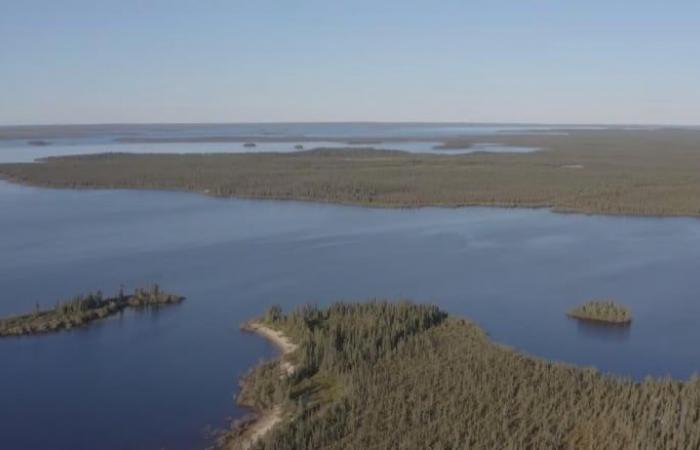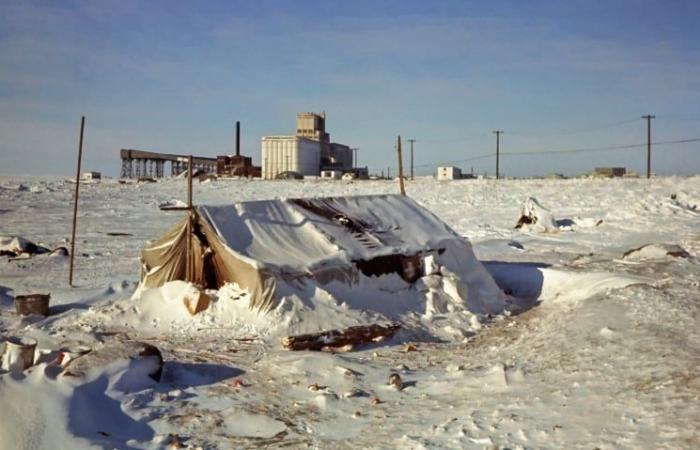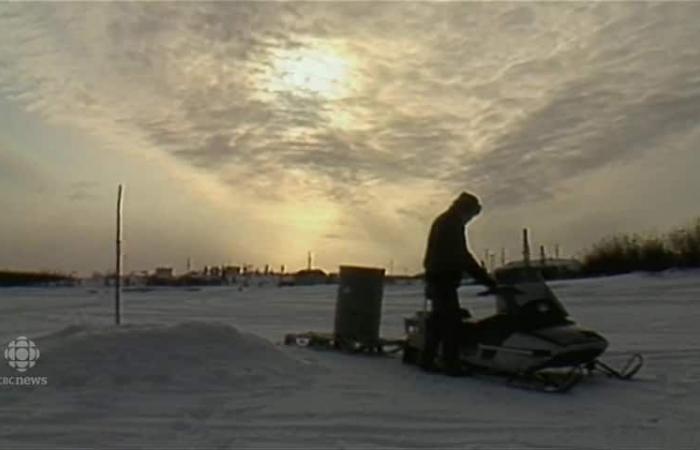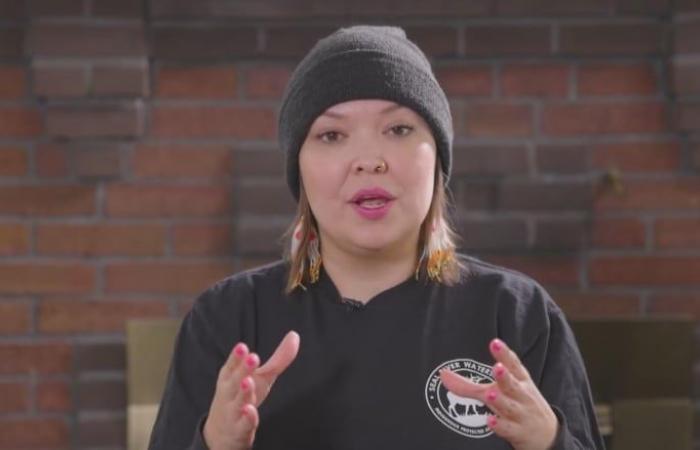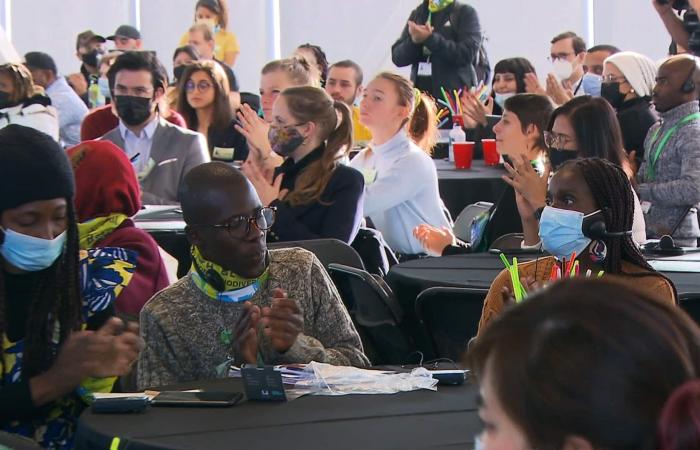Arabnews24.ca:Tuesday 6 December 2022 11:52 AM: In the far northwest of Manitoba, the Seal River flows 260 kilometres through the thick boreal forest into Hudson Bay. It's the only major river in northern Manitoba without any dams. No roads lead to the river, and there's only one human settlement in the river's watershed.
That community, the Sayisi Dene, is leading an initiative along with neighbouring Dene, Cree and Inuit communities to protect the 50,000 square kilometres of the watershed. That's an area of untouched wilderness roughly the size of Nova Scotia, which would be protected from industrial development if the community's proposal is accepted.
"It is 99.97 per cent pristine. The watershed is actually fully intact. There are no disturbances, no industrial development in the watershed whatsoever," said Stephanie Thorassie, executive director of the Seal River Watershed Alliance.
"And for those reasons, because of how remote we are, we are a little piece of heaven in the world that is a little bit unnoticed and we kind of like it."
The federal government has noted that Indigenous-led proposals like the Seal River Watershed are crucial for Canada to meet its conservation goals. Canada has pledged to protect 30 per cent of its land and 30 per cent of its oceans by 2030. By the end of 2021, about 14 per cent of each were protected, according to Environment and Climate Change Canada.
With the UN biodiversity conference, COP15, kicking off in Montreal this week, Canada has been behind a diplomatic push to achieve a new global agreement on protecting nature.
And experts say attention will be on Canada's own targets. In just eight years, Canada has to double the amount of land protected in all of the national parks, provincial parks, conservation areas and other protected spaces that were established over the past century.

While it's a tall order, crucially, it's also a chance to do conservation right, by choosing the most ecologically important places and letting Indigenous knowledge and people take the lead, according to James Snider, the vice-president for science, knowledge and innovation at World Wildlife Fund Canada.
"It's through the lens of Indigenous-led conservation, or conservation more broadly, that supports Indigenous rights and objectives, that is the means by which we get to those important targets," said Snider, who has been researching the most carbon-rich and ecologically valuable areas in the country over the past year.
Reconciliation through conservation
The history of the Sayisi Dene vividly illustrates this opportunity.
In 1956, based on flimsy and ultimately disproved evidence, the Manitoba and federal governments decided that the caribou herd was declining, and blamed the Sayisi Dene for over-hunting. The entire community of about 250 people were relocated to just outside Churchill, on Hudson Bay, far away from the lands that had sustained them for centuries.

There, they experienced poverty, racism and lack of adequate housing. Nearly half the community died after the forced relocation, while the caribou population was eventually found to be actually stable.
In 1973, a group of community members left on foot and settled around Tadoule Lake, in the Seal River watershed, to return to their traditional way of life.
Today, 325 people live in the community. The Sayisi Dene survived by returning to their traditional homelands and lifestyles, but some say they are ready to go further.
The Indigenous Protected and Conserved Area (IPCA) that they have proposed will — unlike the false environmental concerns that displaced them — show a new scientifically and culturally informed way of protecting biodiversity, according to Thorassie. It will also allow the community to provide employment through eco-tourism, she added.
WATCH | From the archives, the Sayisi Dene in Tadoule Lake:

From the CBC archives: Sayisi Dene in Tadoule Lake (1978)
Duration 5:18
"I think that utilizing our first peoples to do this work is the right way to go about creating protected spaces," Thorassie said.
"Utilizing the knowledge of our elders and our community members and our land users — that knowledge that they carry is older than universities. It's been here since before Canada was created.
"Being able to have an opportunity to stand and tell the world what's important to us, for our reasons, and to protect it for ourselves, by ourselves, is something that hasn't been done before. That's what's different this time around."
According to a report from the Canadian Parks and Wilderness Society (CPAWS), Canada can nearly reach its conservation goal for 2030 with all the dozens of IPCAs already proposed across the country. But provincial governments have to be on board before an area can be protected, and the CPAWS report called out several provinces for dragging their feet on the process.

The report pointed out that Manitoba does not currently have a conservation target. About 11 per cent of the province is protected. But proposals on the table, which include Seal River, and a few other IPCAs, would get the province to 29.1 per cent, according to the report.
"We have enormous leadership on the ground from Indigenous peoples who are identifying areas for protection across the country," said Alison Woodley, senior strategic advisor at CPAWS.
"But we have this blockage in terms of provinces and territories which are not stepping up in most cases to actually adopt and embrace these ambitious targets and support Indigenous-led conservation."
Canada's newest national park
Canada's newest national park, Thaidene Nëné National Park Reserve, is considered a success story. It was established in 2019 along the eastern arm of Great Slave Lake in the Northwest Territories.
It's part of a larger Thaidene Nëné Indigenous Protected Area, which protects species like moose, bears and wolves, preserves habitat for various migratory birds and protects areas of boreal forest and tundra.

The national park and surrounding areas are co-managed by the government and the Łutsël K'é Dene First Nation. Along with protecting the ecologically sensitive area, the Indigenous community's vision is to provide employment to community members who will work as guardians and in other job roles in the park, develop infrastructure for visitors and work on conservation and research projects in the area, according to the community's website.
Steven Nitah, the nation's chief negotiator for the establishment of the national park, said that not all governments and jurisdictions are at the same level of understanding around Indigenous reconciliation, leaving challenges for other communities that want to establish IPCAs.
"Indigenous nations that are advancing their own protected and conserved areas really have to drive their agenda," he said. "They have to own what they want to create."
WATCH | What young leaders want to see at COP15:

What young leaders want for the future of biodiversity at the COP15 Youth Summit
Duration 2:09
Research shows how valuable Canadian forests are
In recent years, scientific research employing newly available satellite data (among other methods) has painted a clearer picture of just how valuable Canada's forests are. The area of the Seal River Watershed is one of the most carbon-rich landscapes in Canada, part of a swath of carbon-rich forests and wetlands extending from Northern Ontario into Manitoba.
That carbon is tied up in plants, trees, and most importantly, layers upon layers of dead organic material built up over centuries and stored in the soil.
Keeping that carbon where it is, scientists say, is crucial on a warming planet. If that carbon is disturbed and ends up escaping into the atmosphere, it will trap more heat and escalate the climate crisis.
"We have amongst the largest area of intact ecosystems remaining in the world," Snider said.
"We store a tremendous, jaw-dropping amount of carbon. And so there's a responsibility globally, many would argue, in terms of protecting those important places."


